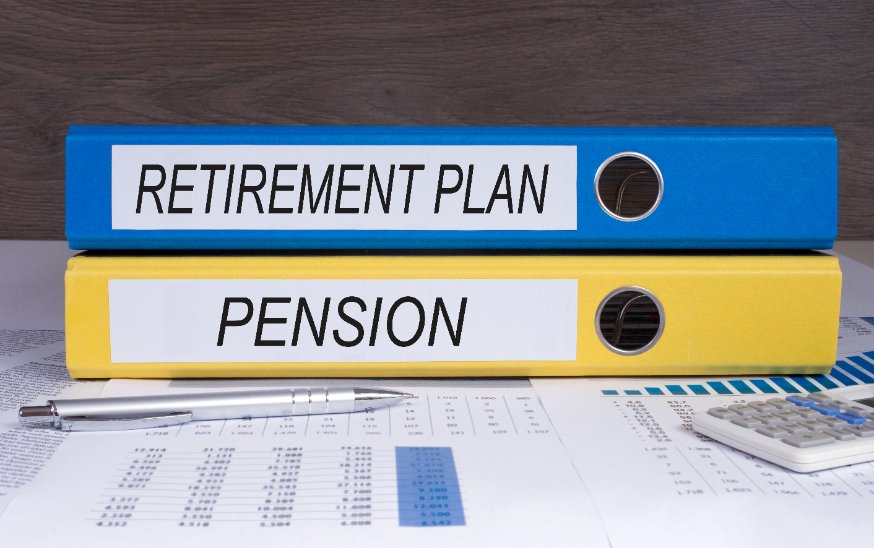
The best thing anybody can do to secure a stress-free, comfortable retirement is to maximize 401(k) contributions, save early, and save consistently. It is also very important to invest in stocks when young to reap the rewards of higher returns over a long time horizon.
But once you retire you have to start thinking about a different investment strategy. Having a large portion of your retirement investments in stocks can lead to disaster if there is a serious recession and bear market.
Risk Taking in Retirement
Once retired, it is likely you have no salary income from a job. You will very likely have Social Security benefits and you might even have a pension. If this retirement income can cover your retirement expenses then you are all set. You can actually keep investing in higher-risk investments because you won’t need the investment principal. But most people won’t have this luxury and will indeed need to dip into the principal of their retirement portfolio.
It used to be that many retirees could generate enough interest from bonds to pay for retirement expenses. But with interest rates still low and inflation well above interest rates, this is impossible. Real interest rates (nominal interest rates minus inflation) are currently negative. This means that bonds are losing money to inflation every year. So the strategy of generating income from bonds is out the window for now.
For most people who will need investment principal in retirement, it is best to go with a bucket approach. This strategy places the money you will need in the first few years into safer investments such as short-term bonds or a money market fund. This is the money you can’t afford to lose. The next bucket is money you will need in 5 to 7 years. This money should be mostly in bonds, but partially in stocks, usually a 60/40 split between bonds and stocks. The next bucket is the long-term bucket that you won’t use for a long time. This bucket should be at least half in stocks.
Diversify Your Investments
Most investors know that they need to be diversified with their investments. This is especially true in retirement when you cannot afford to lose a lot of money in a market downturn. I used WealthTrace’s retirement planning software to see how much it matters when a retiree is diversified vs. not diversified.
A diversified portfolio that has U.S. bonds, international bonds, U.S. stocks, international stocks, and some cash holds up much better in a bear market scenario than a portfolio that is not well diversified. The non-diversified portfolio loses 20% more money in this scenario I ran in the WealthTrace software.
I also ran asset allocation scenarios in the WealthTrace retirement software and found that a 50/50 mix of stocks and bonds is much safer than a 70/30 stock-bond mix in retirement. Using Monte Carlo simulations, the 50/50 mix gave a higher probability of meeting all of the retirement goals I had set out.
Not All Stocks Are the Same
We are seeing this play out right now. Riskier technology stocks are down over 30 percent this year. Meanwhile, consumer staple stocks are nearly flat. Consumer staple stocks are generally much less volatile than many other stocks because of steadier cash flows, strong dividend payments, and the fact that people still spend money on their products even in a recession.
Retirees should think about having a healthy chunk of their portfolio in solid dividend-paying, consumer staple stocks. In fact, many retirees live off the dividend payments from their portfolios, especially if they bought these stocks long ago and the dividends have increased over time.
Dividend-paying stocks can give retirees the retirement income that has been lost to low-interest rates. Although dividends can be cut at any time, there are companies called dividend aristocrats that have increased their dividend payments for over 25 years in a row. These tend to be large, established companies that are profitable even during recessions. There are even funds that invest in dividend aristocrats, such as the ProShares Dividend Aristocrat ETF. This diversifies investors among all of the dividend aristocrats that exist.
Keep and Maintain a Budget
Keeping and maintaining a budget can help retirees with their investments as well. Not spending too much allows retirees to keep more money in stocks since they won’t need as much of the investment principal. If you spend too much and need to dip into investment principal, this means that money needs to be in shorter-term, lower-returning investments such as short-term bonds or a bank account.
There are many budgeting apps to choose from and a lot of people just use a spreadsheet. Whatever you choose to use, make sure you look at it and update your budget at least once a week.
Bottom Line
The key to retirement is to reduce the riskiness of your portfolio while meeting all of your retirement goals. Those who won’t need much of their retirement portfolio principal can take more risk and invest in more stocks. But for those who will need most of their investment principal, it is wise to be well diversified and not have more than 50 percent of the portfolio in stocks.
You should also have a retirement plan in place. Either create your own retirement plan using DIY retirement planning software or hire a financial planner to help you do this. This way you can track your progress, run scenarios, and make sure you are not taking risks you should not be taking.
Read More:
Did The Amazon Split Work Out For The Investors?
Losing Money In The Stock Market? Here’s Some Real Investment Advice
My Favorite Beer Money Websites
Come back to what you love! Dollardig.com is the most reliable cash-back site on the web. Just sign up, click, shop, and get full cashback!